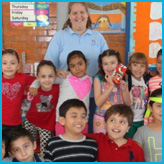
Differences of Teaching Young and Adult Learners
Students wishing to learn English generate many teaching job openings across the world. Teaching English as a foreign language (TEFL) generally occurs in the student’s own country and usually through private tutelage or as part of after-school programs. There is a high demand for TEFL specialists that can teach both adults and children; on the other hand, when choosing one age group to instruct, the difference of teaching young learners versus teaching adults must be considered in order to ensure that you find the best fit for your skills and teaching style.
Differences in Classroom Style
Kids learn English at public or private schools and often attend language schools in the evening or on weekends, creating an exceptionally large demand for English-speaking teachers. Adult courses will generally be taught at night or on weekends and may be more limited in availability.
Here are a few other differences in classroom style to consider:
- Student-teacher ratio: Teaching adults generally involves much smaller classes than young learners. Lessons can be more individualized and teachers can get to know students when teaching small groups.
- Classroom activities: Since children are encouraged to learn languages through games, songs, artistic projects and storytelling to stay engaged, teachers have the chance to incorporate a lot of energy and excitement into their teaching that is not as common in adult programs.
- Rate of progress: As children are also learning their native language, teachers are likely to see huge leaps in ability. Most adult learners have specific goals for acquiring their English knowledge, allowing them to reach a direct and immediate impact of their learning in their daily lives, even though their progress may not be as rapid.
- Behavior: Young learners are inconsistent in their motivation and mood, which presents challenges for teachers. Leading a young-age group class demands patience and a more diverse repertoire of learning activities as opposed to working with middle-aged or old students.
Achievement and Expectations
Another major difference when teaching young learners versus teaching adults is the expectation placed on instructors. Teachers must assess their own mastery of the English language and their ability to handle pressure from students.
- Topic relevance: When teaching older students, topics should be relevant to more personal or daily life experiences, making it easier to create engaging lesson plans.
- Grammar: Teaching adults requires a much higher mastery of grammar given that concepts need to be taught effectively to older students. Beginner-level children classes require only a general understanding of grammar so teachers face fewer grammatical demands during the class.
- Pressure: Teachers are under more pressure when leading classes of mature learners because expectations are higher as these students pay for their EFL classes themselves. Instructors need to be able to create a clear vision of their curriculum and deliver results.
TEFL courses with job guidance, such as ITTO’s, offer wonderful opportunities to engage with students of all ages. The difference of teaching young learners versus teaching adults can be best approached by knowing your own strengths as a teacher. To determine which group of students you are best suited to lead, consider your teaching style and mastery of the language before applying for a teaching position.
*Feel free to share our articles, we only ask for credit! Be sure to mention International Teacher Training Organization as the author and a link back to our website: www.tefl-online.com.
Browse through Related Articles!




















